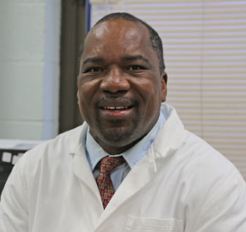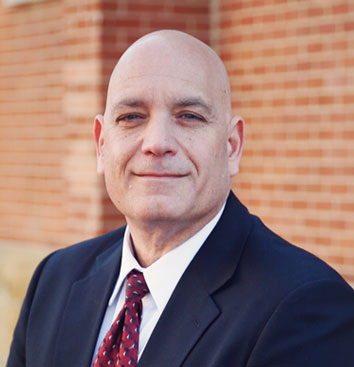

|
Joel Carter BA LSW
Effecting positive outcomes through manipulation of offenders in the Opiate Epidemic
With the national crisis of Opioid dependence flourishing across the nation, this presentation will look at positive manipulation of the offender through the use of automated immunoassay drug screening results and how that works to reduce Opioid dependence. Common urine screes that are predominately used in the criminal just field, offer little to no data other than the positive or negative results. As the offenders become more sophisticated in their manipulation and evasion of testing, the criminal justice field will need to counter this with more effective and sophisticated screening methods. In addition to this increase in sophistication for urine screening, the data and subsequent results are a far more effective tool to use with the offender to effect change in their behavior by holding them more accountable. This presentation will discuss the Thermo Fisher Scientific Automated Immunoassay testing, the Paracelsus software that drives the results and how to utilize this information in layman’s terms for the staff working to combat the Opioid Epidemic.
Accomplishments:
|
|

|
Dr. Guei, Ph.D. Ohio University, Forensic Toxicology/Drugs & Controlled Substances Chemistry
Dr. Guei will set the scene of the conference by presenting an overall review of the opioid epidemic. Starting with the basic definition of opioid, he will proceed with the different phases and key drivers of the crisis since its beginning in the 90’s to the most recent statistical data available. Specific attention will be paid to fentanyl, a potent synthetic opioid, and its analogues, their scheduling in the DEA controlled substances list, and their metabolism. The effort in the chemistry and pharmaceutical industries in combating the crisis with the development of new painkiller drugs targeting new and multiple receptors and drug with abuse deterrent will also be discussed. The last part of the presentation will discuss the overdose deaths reduction in the context of the distribution of fentanyl testing kits to patients suffering from substance use disorder for the screening of fentanyl in safe injection centers.
Jules Guei received his Ph.D. in analytical/organic chemistry and a master’s degree in chemistry from the University of Maryland. Dr. Guei has spent 24 years in the field of chemistry including forensic toxicology, drug & controlled substances chemistry, and analytical instrumentation. He has taught courses, both lectures and laboratories including drugs and controlled substances chemistry, chemistry for nursing, organic chemistry, general chemistry, DNA, forensic chemistry, and forensic toxicology. His extensive experience in laboratory includes a knowledge of analytical instruments such a Mass Spectrometry, Liquid Chromatography, High Performance Liquid Chromatography (HPLC), Ultraviolet-visible (UV-vis) detectors, Raman Spectroscopy, Fourier Transform Infrared (FT-IR) Spectroscopy, Inductively Coupled Plasma Mass Spectrometry (ICP-MS), Inductively Coupled Plasma Optical Emission Spectroscopy (ICP-OES), Atomic Absorption Spectroscopy (AAs), Gas Chromatography Mass Spectrometry (GC-MS), Gas Chromatography Flame Ionization Detector (GC-FID), and Nuclear Magnetic Resonance (NMR) Spectroscopy. Dr. Guei is currently a faculty member at Ohio University in the Department of Chemistry/Biochemistry in the program of analytical and forensic chemistry (CHEM 4850/5850: Introduction to Toxicology). The broad focus of his undergraduate research is on forensic toxicology, drugs & controlled substances chemistry, and analytical instrumentation. He is responsible for the forensic and analytical instrumentation laboratory at Ohio University in Athens. Dr. Guei is an expert witness to the court of law in matters related to forensic toxicology, drug & controlled substances, and DNA. Dr. Guei is a founding member and President of State Street Laboratories, LLC, a clinical and forensic toxicology drug testing laboratory in Piketon, Ohio. |

|
Dr. Donald J. Kyle, Ph.D. Vice President, Discovery Research and Non-Clinical Sciences, Purdue Pharma, L.P.
The opioid crisis in the United States has prompted significant responses on many fronts including law enforcement, education, and policy. After obtaining a BS degree in chemistry from Colorado State University, Don received his Ph.D. in organic chemistry in 1986 from Texas Tech University. During his undergraduate and graduate research, he worked on synthetic methodologies associated with chiral induction via stereoselective aldol condensation reactions and the total synthesis of sesquiterpene natural products. His first position in industry was at Nova Pharmaceutical Corporation where he designed novel NMDA receptor antagonists, led a structure-based design approach to novel bradykinin B2 receptor antagonists, and developed computational tools aimed at the elucidation of protein structure for application to drug design. Over the course of his subsequent ~30 year tenure in the pharmaceutical industry, he assumed increasing responsibilities at various companies. In 1998 he joined Purdue Pharma with the mission to establish a non-opioid, pain research department, a team that ultimately grew to over 100 scientists in Cranbury New Jersey. His current position at Purdue Pharma is Vice President of Discovery Research and Non-Clinical Sciences, a title he has held since 2006. Don has led research in the areas of pain, inflammation, CNS diseases, as well as computational & structural biology. His most recent research activities have been in the areas of ion channel biology and signal transduction bias in G protein-coupled receptors. Mechanisms of interest include ion channels such as TRPV1 and voltage-gated channels including calcium (Cav2.2) and sodium (NaV1.7, Nav1.8). Other targets of interest include the opioid receptors, the ORL1 receptor, the trace amine receptors (notably TAAR1) and the NGF/TrkA system. His scientific accomplishements in these and other areas are reflected in nearly 200 publications, review papers, and book chapters, and his innovations are reflected in 85 issued US patents related to new molecules, technologies, software, and commercial products. He is a reviewer and editorial advisory board member for several peer-reviewed journals, and has held several adjunct faculty appointments. Most recenty Don participated in the NIH scientific meetings and working groups aimed at formulating a strategy to underpin a public-private partnership to combat the opioid crisis. Some of the strategy is foundational to the HEAL (Help End Addiction Long-Term) initiative, funded by Congress and launched in 2018 by the NIH. |

|
Andrew Mollica, Attorney
A general presentation on how the courtroom and the legal system have been impacted by this opioid epidemic.
An Athens native, Andrew J. Mollica, engages in the general practice of law with a focus in personal injury litigation. |

|
Fred Moses, Judge, Hocking County Municipal Court
This presentation discusses the Hocking County Municipal Courts Drug Court Program for clients who use naltrexone. The program follows the drug court model through the NADCP. It will explain the assessment process for participants and treatment services participants utilize during the program. Data will be presented on current court participants and the overall employment rate at graduation. Fred Moses was elected to the Hocking County Municipal Court in Logan, Ohio on November 8, 2011. He received his undergraduate degree from The Ohio State University in 1992 and his J.D. from the Capital University Law School in 2002. He also previously worked in the packaging and quality assurance departments at Anheuser Busch while attending law school. He had a private practice as a defense attorney for 9 years prior to being elected. In 2012 Moses implemented a medically assisted Drug Court Program to his docket that utilizes Vivitrol/Naltrexone. |

|
Lisa Roberts, RN, Portsmouth City Department of Health.
Ms. Roberts will discuss Ohio Department of Health efforts to combat the opioid epidemic and Project DAWN. Lisa is a Registered Nurse employed at the Portsmouth City Health Department in Scioto County, Ohio which is part of the Appalachian region. In 2010, Lisa helped form the Scioto County Drug Action Team Alliance—a community coalition that serves Scioto County. She has assisted Scioto County to receive a High Intensity Drug Trafficking Area (HIDTA) designation and also a Drug Free Communities (DFC) Support Program grant—both administered by the Office of National Drug Control Policy. Lisa currently administers the DFC Program which is now in its seventh year. The DFC program uses a data driven community-based coalition infrastructure to achieve population-level reductions in substance use and to mitigate the harms associated with substance abuse. The DFC program has assisted Scioto County to build a county-wide infrastructure to identify and respond to substance use issues leading to population level reductions in past 30-day use of alcohol, tobacco, marijuana and prescription drugs in 12-to 17-year olds. She has collaborated with local, state, and national leaders to seek innovative solutions to the opioid crisis. She has worked extensively in the area of opioid misuse and overdose prevention and has piloted multiple projects designed to address overprescribing, accidental drug overdoses, and the harms associated with opioid use disorder. Lisa worked with the Ohio Department of Health to implement Ohio’s first community-based naloxone education and distribution program, Project DAWN that has since been widely replicated throughout Ohio and saving thousands of lives. She was instrumental in establishing a syringe exchange program in rural Scioto County that currently serves over 800 clients—the majority of which suffer from opioid use disorders. In 2017, she helped her county gain a federal Rural Health Opioid Program through the Health Resources and Services Administration (HRSA) which is designed to enhance local response to the opioid crisis. Lisa currently collaborates with numerous federal research grant recipients to study the opioid epidemic and its collateral consequences to better inform national response strategy and public health science. |
Register for the Conference while seats are available.